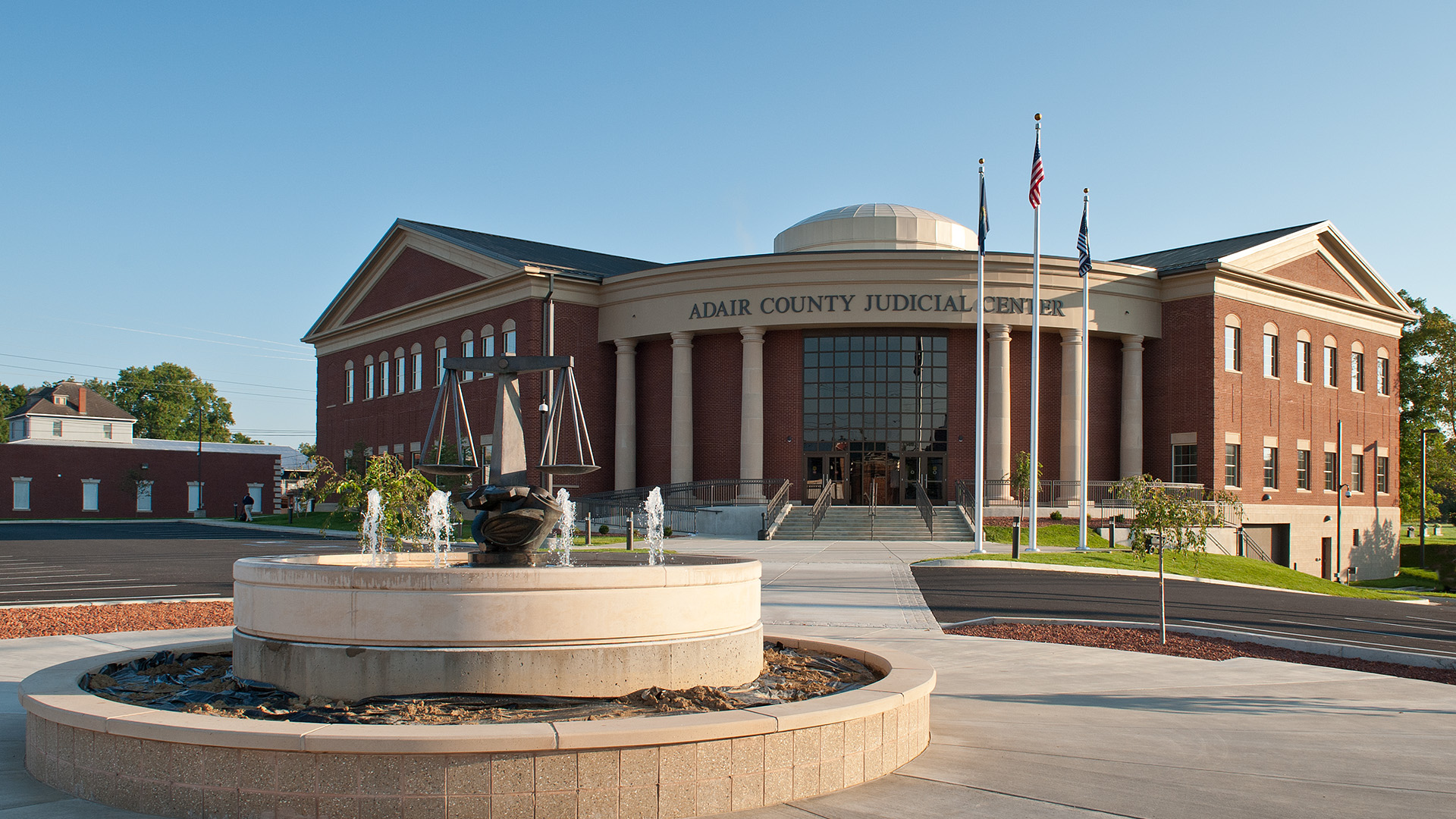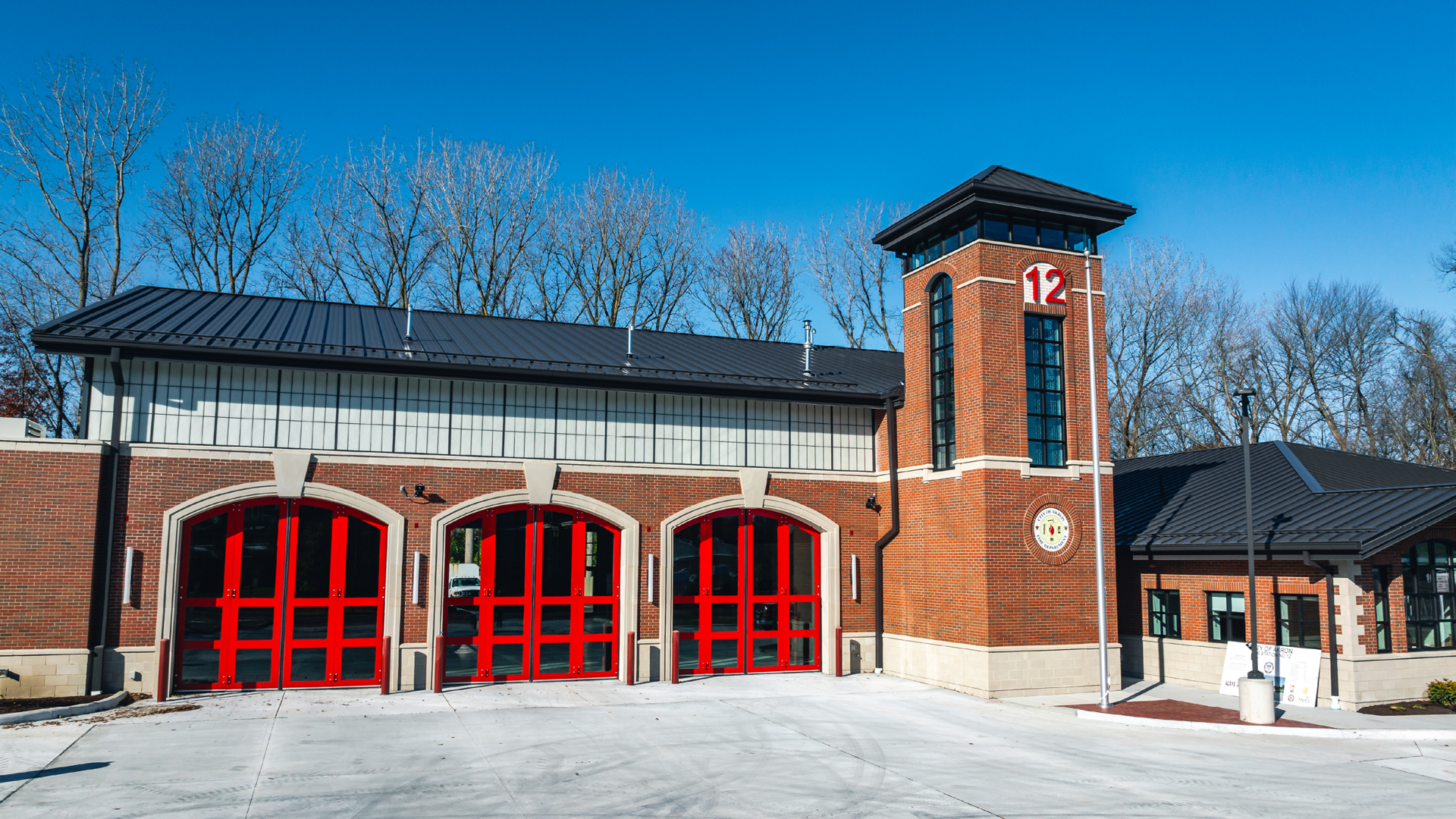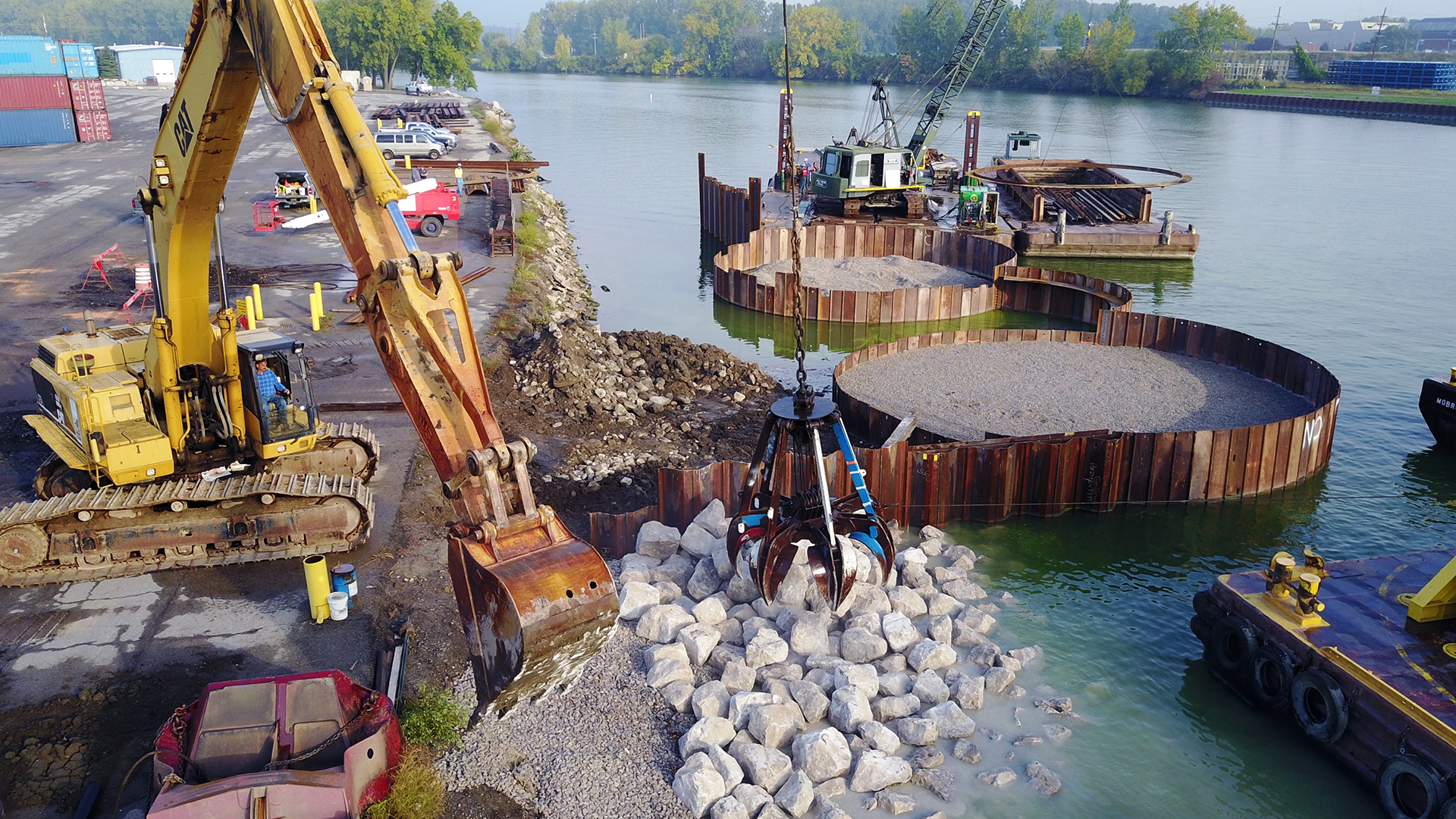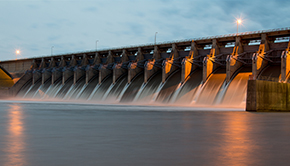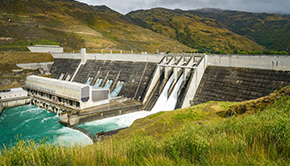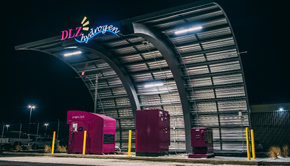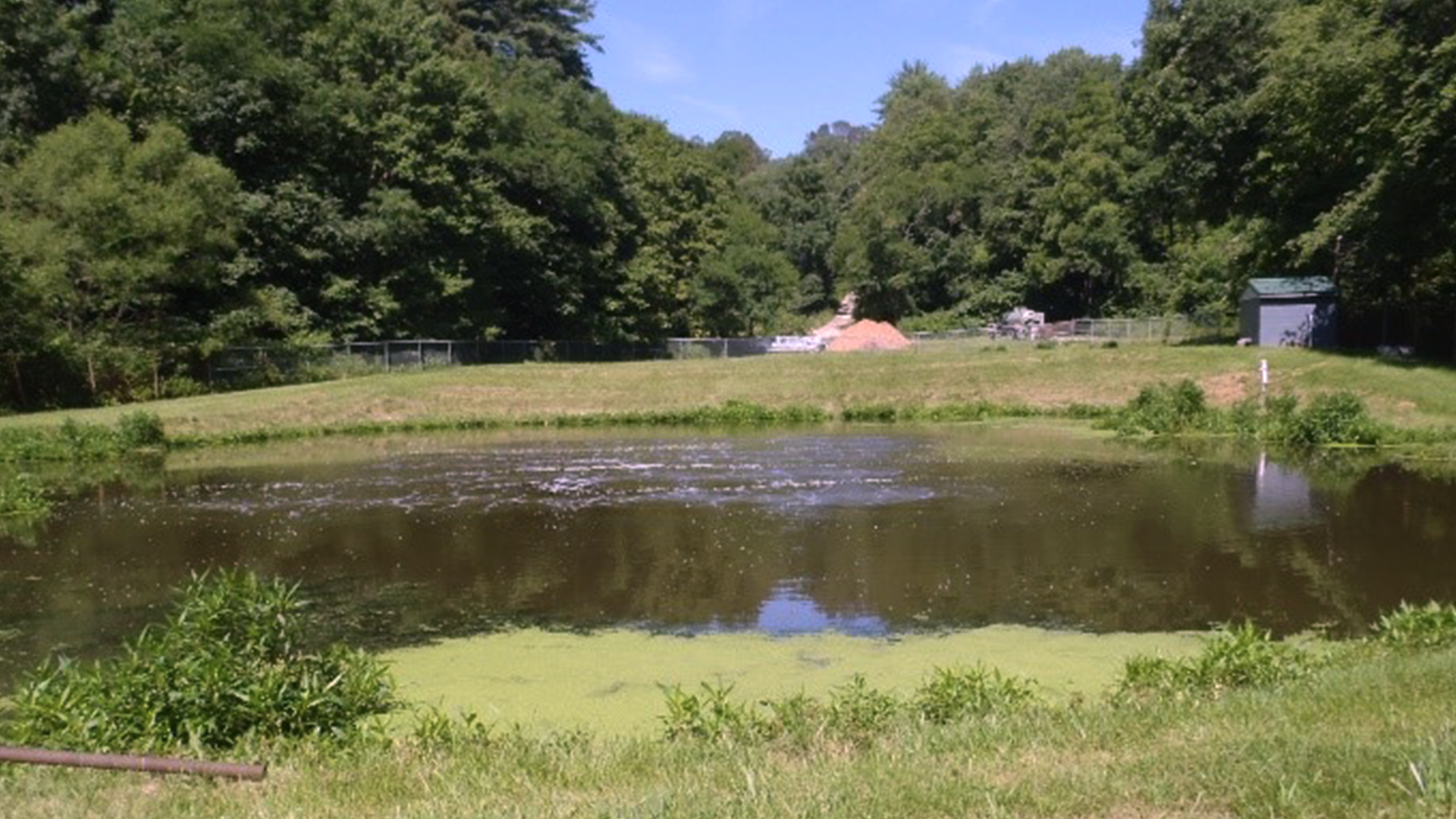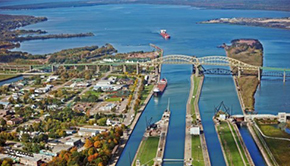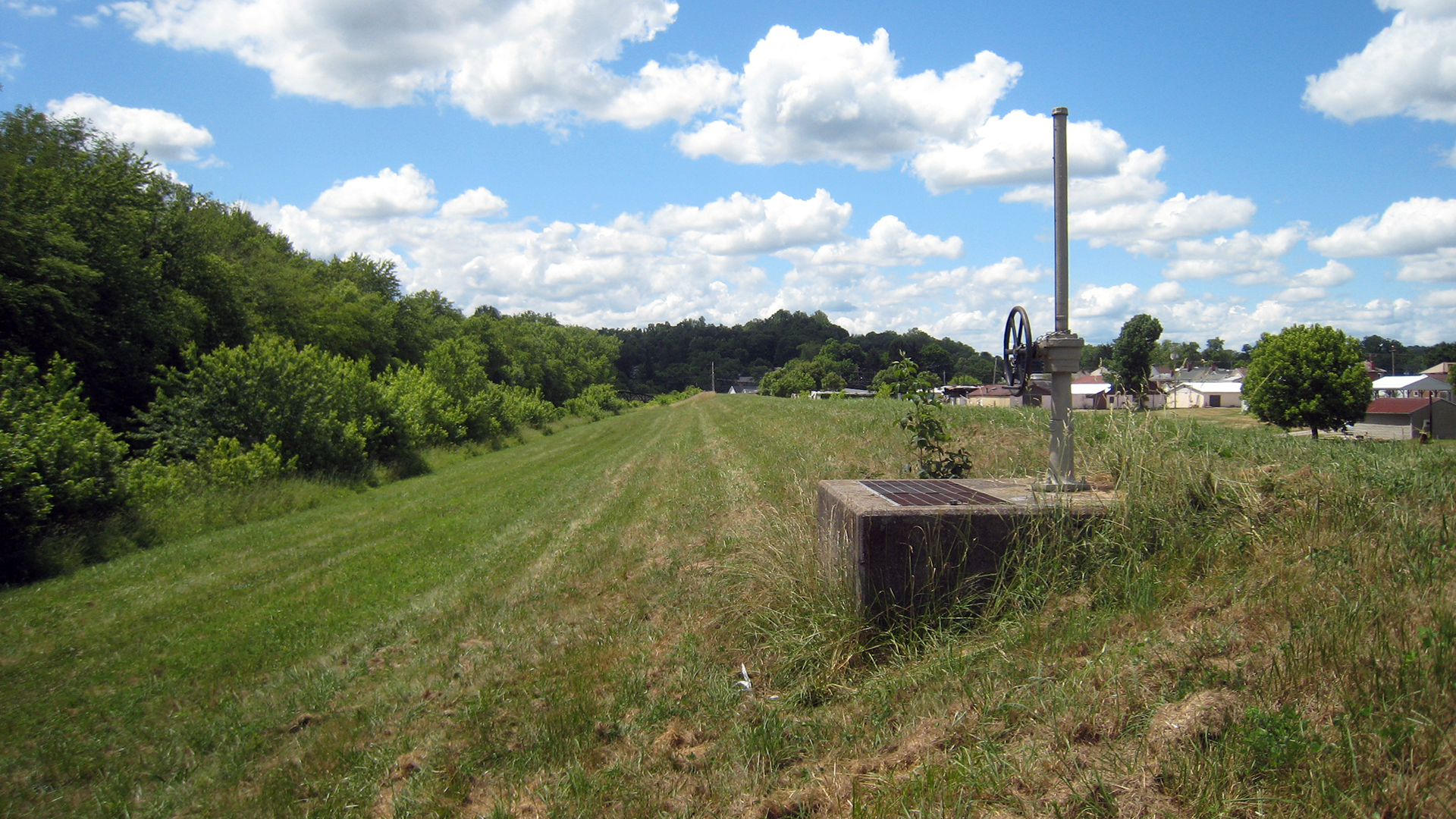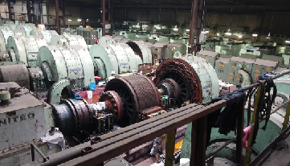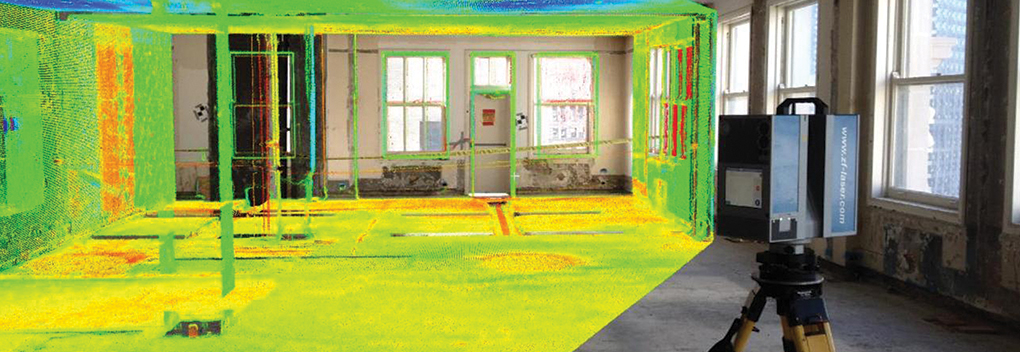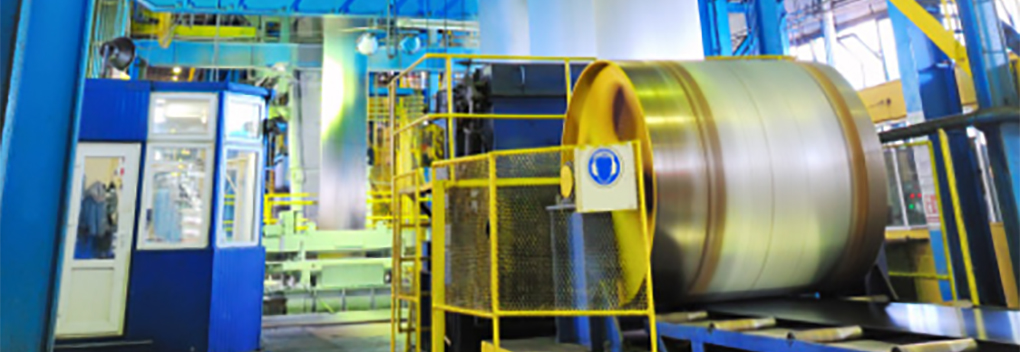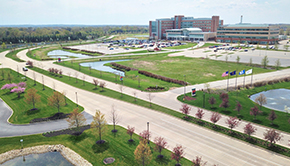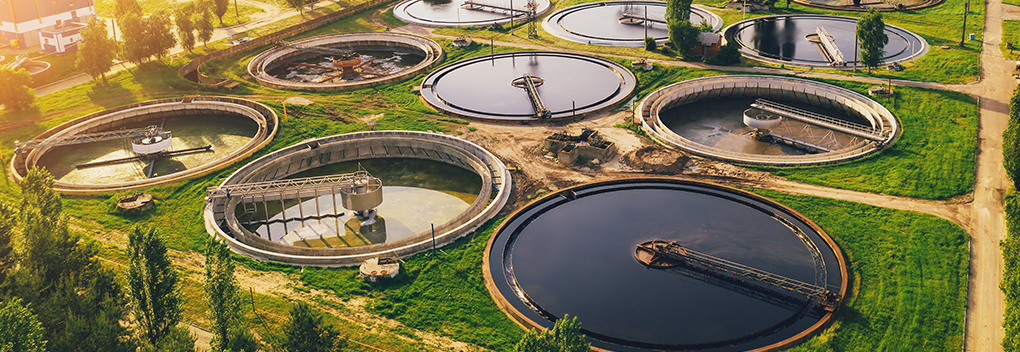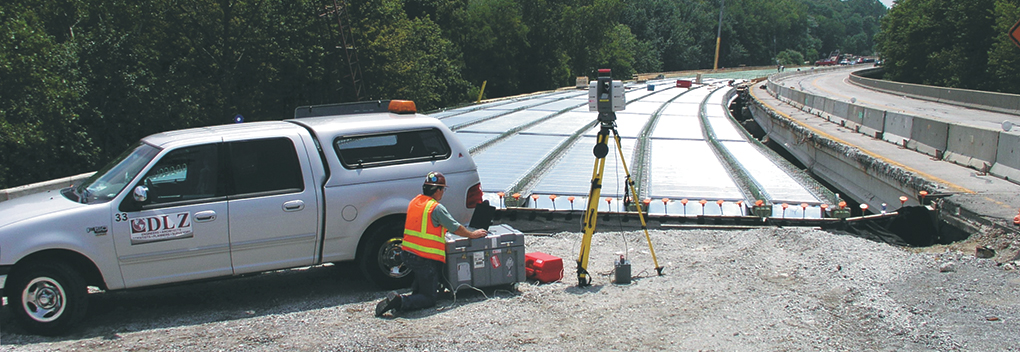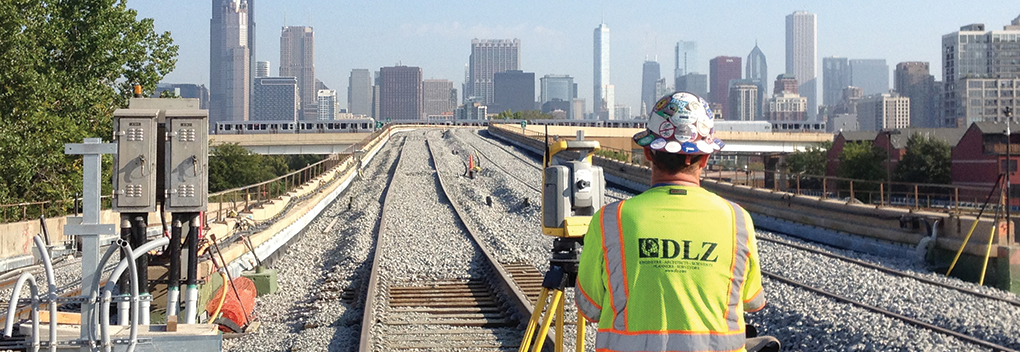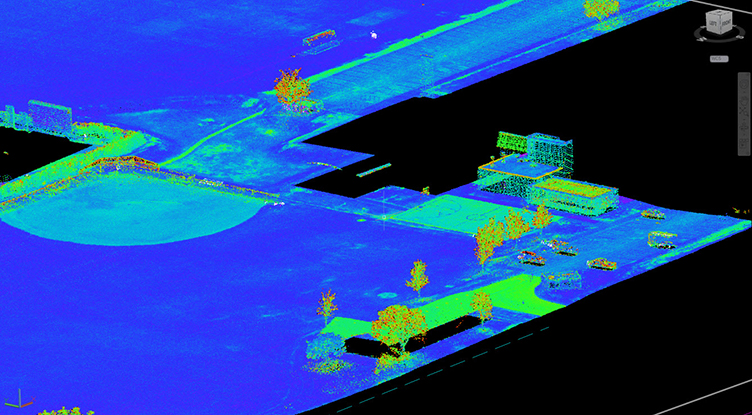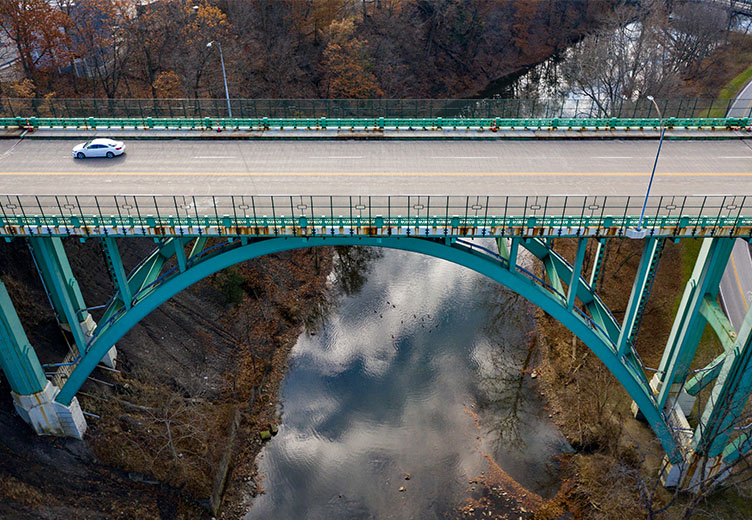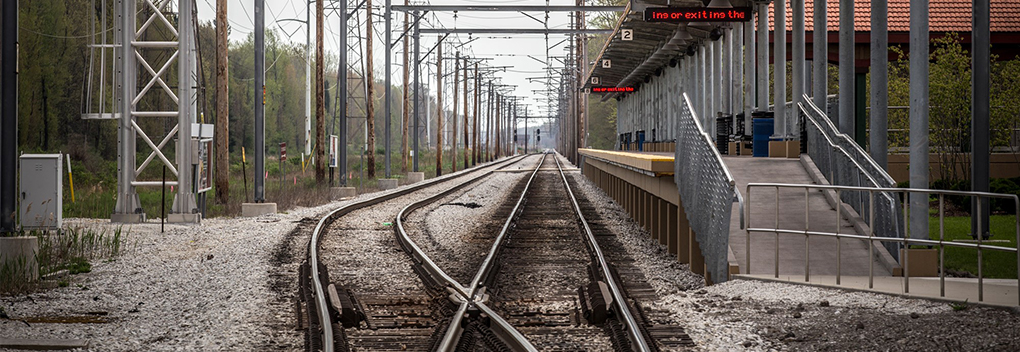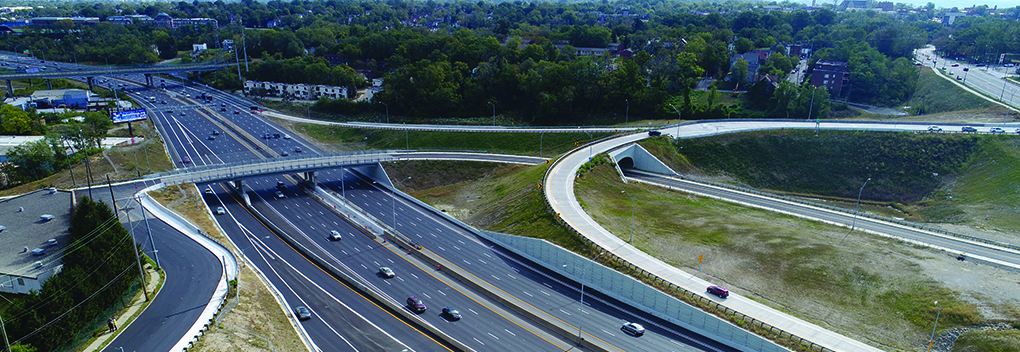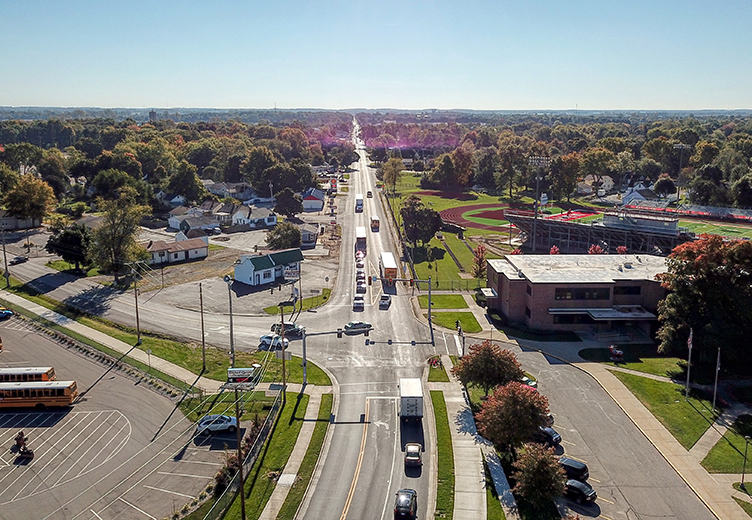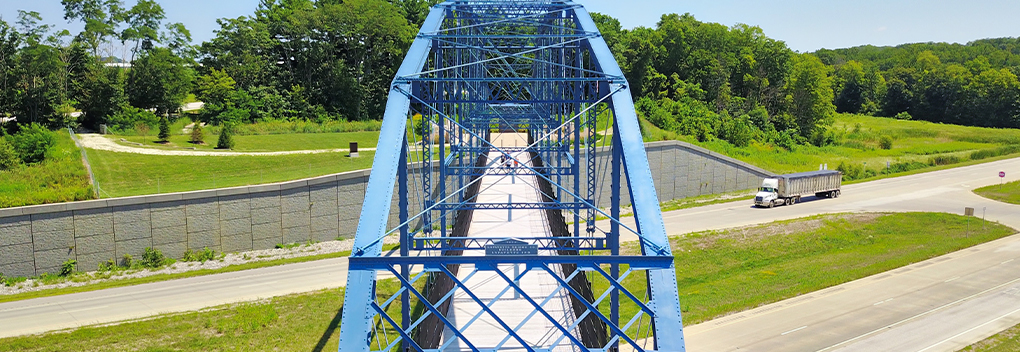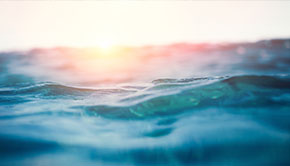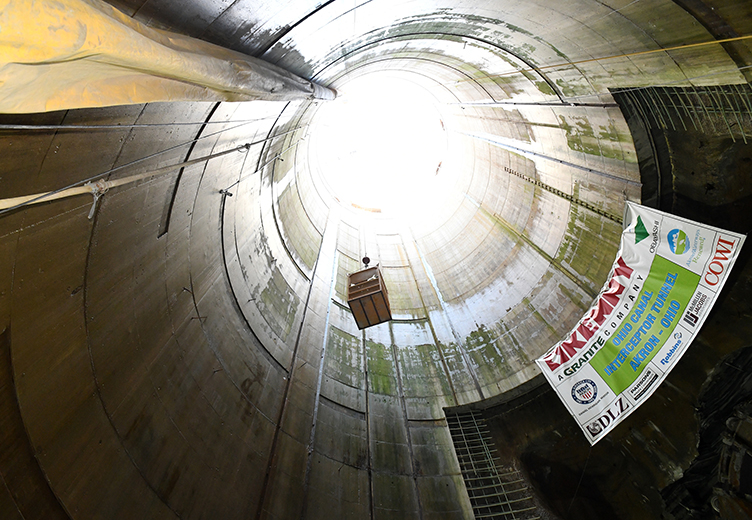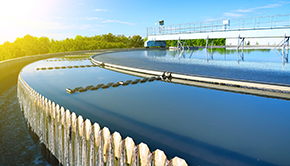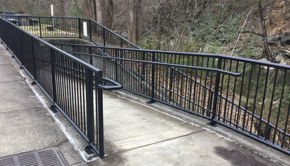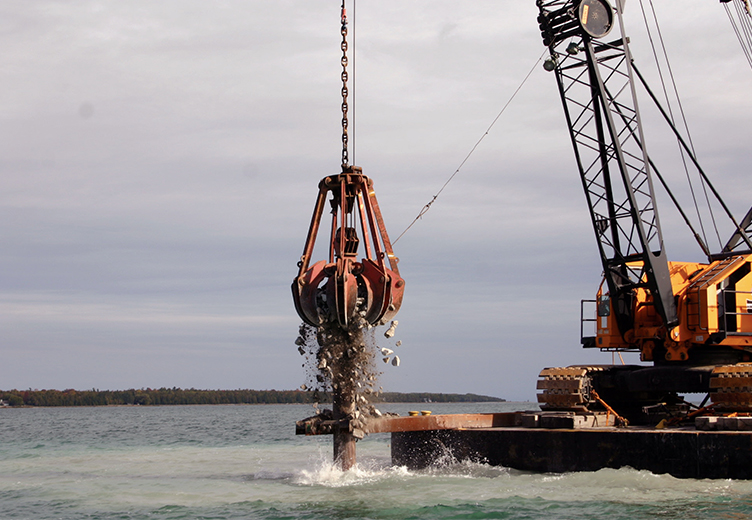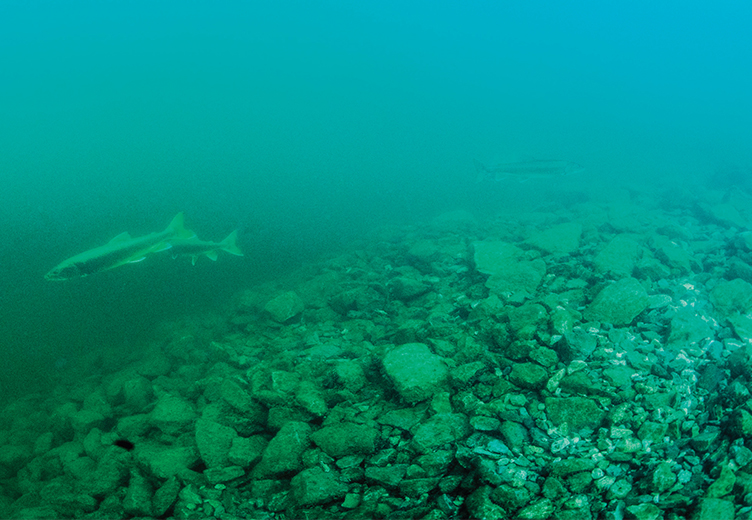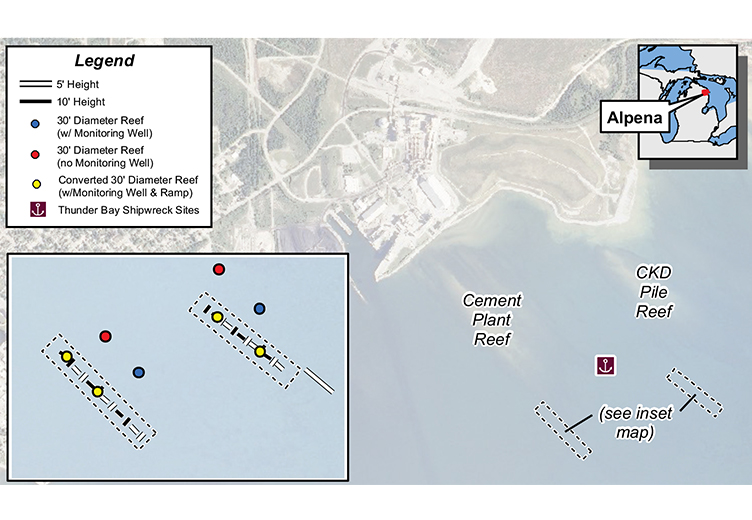MDEQ National Gypsum Reef Restoration, Michigan
Several years ago, nearly 1.5 acres of rock reefs, placed in Lake Huron’s Thunder Bay, targeted improvement of lake trout and whitefish spawning habitat. The National Gypsum site located along the shore caused cement kiln dust (CKD) deposition. Over 50 years of deposition and erosion into the bay led to construction of reefs. The CKD deposition, a waste by-product of cement production, has resulted in aquatic habitat loss to the nearshore areas around. Thus, the capped pile onshore, and a revetment wall installed along the lake shore, aimed to prevent further erosion of CKD into the water. Essentially, aquatic habitat loss has meant a decrease in potential spawning areas for fish species. The habitat includes species such as lake trout, lake whitefish and walleye. Also leading to a reduction in habitat for prey species and macro invertebrates, and a loss of refuge areas for fish eggs and fry.
Project Scope
The purpose of MDEQ National Gypsum Reef project’s was to:
- Assess potential mitigation for CKD-impacted reef habitat,
- Develop design documents for the selected mitigation, and
- Implement the chosen alternative once completed.
Constructing a new reef habitat was the preferred option for mitigating the loss of fish spawning substrate due to CKD deposition. The MDEQ National Gypsum Reef project included performing a feasibility study, detailed investigations of the site with a dive team to assess the composition of natural reefs, identification of potential placement for artificial reefs, and designing new reef habitats to be placed adjacent to two existing degraded reefs.
DLZ constructed twenty-nine prototype reefs to compare the effects of those three factors. The prototypes varied in reef size, height, and orientation. DLZ performed one year of pre-construction monitoring and five years of post-construction follow-up. Thereby, comparing lake trout spawning activities and fry survival on an impacted reef, natural reef, and new reefs. The project was successful because it involved a multi-agency effort to complete. Finally, it has resulted in the increased production of fry and the use of reefs for spawning by both lake trout and lake whitefish.

